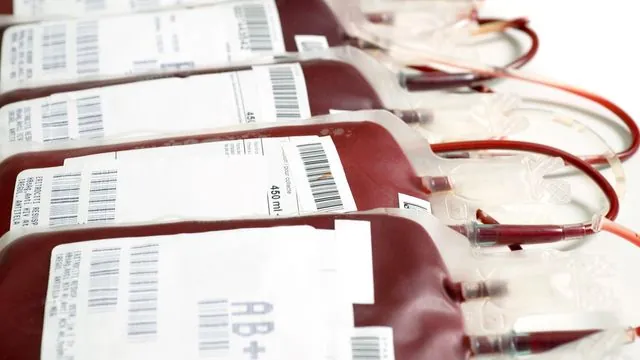
Breakthrough Discovery in Blood Cell Creation Could Revolutionize Artificial Blood Production
2025-07-07
Author: Mei
Transforming the Future of Blood Production
Groundbreaking research from the University of Konstanz and Queen Mary University of London reveals a significant molecular trigger that enhances the maturation of red blood cells. This discovery has the potential to propel advancements in artificial blood production, though it may take time before clinical applications materialize.
Unraveling the Mysteries of RBC Formation
The natural production of red blood cells, a process known as erythropoiesis, occurs primarily in the bone marrow. Stem cells transform into erythroblasts, eventually maturing into erythrocytes. A key phase in this process is the expulsion of the nucleus from erythroblasts, creating more space for hemoglobin, the essential protein for oxygen transport—a phenomenon exclusive to mammals.
Until now, the mechanism behind this nuclear expulsion was poorly understood. Led by Dr. Julia Gutjahr at the University of Konstanz, the research team has pinpointed that a chemokine called CXCL12 plays a crucial role in triggering this process.
CXCL12 Revealed as a Game-Changer
Dr. Gutjahr stated, "Our study demonstrated that CXCL12, predominantly found in the bone marrow, can initiate the expulsion of the nucleus when introduced to erythroblasts at the optimal moment." This manipulation could significantly enhance the efficiency of producing red blood cells in lab settings.
A New Understanding of Chemokine Functions
The findings indicate a unique interaction between CXCL12 and erythroblasts, differing from its effects on other cell types. Instead of merely prompting migration, these red blood cell precursors internalize CXCL12, transporting it to their nuclei, where it aids maturation and nuclear ejection.
Professor Antal Rot, co-author of the study, emphasized that these insights not only shift how we view chemokine receptors but also pave the way for novel techniques aimed at improving blood production.
Tackling the Challenges of Artificial Blood Sourcing
Typically, creating artificial blood starts with stem cells from umbilical cord blood or bone marrow, achieving a nuclear expulsion rate of about 80%. However, the limited supply of these cells is a significant hurdle for mass production.
New techniques that convert other cell types into stem-like cells can also be employed, but with less efficacy—only around 40% of these cells successfully expel their nuclei.
Gutjahr adds, "Utilizing CXCL12 could drastically enhance the yield of red blood cells from reprogrammed cells, bringing us closer to resolving blood shortages."
A Hopeful Path Ahead
The research team is optimistic that continued advancements in artificial blood production could lead to transformative solutions for patients in need. With the ability to create rare blood types and generate customized blood for specific treatments, the future is looking bright.
"Though the lab-based process remains complex, improving efficiency could help address shortages and enhance personalized medicine across various diseases," Gutjahr concluded.




 Brasil (PT)
Brasil (PT)
 Canada (EN)
Canada (EN)
 Chile (ES)
Chile (ES)
 Česko (CS)
Česko (CS)
 대한민국 (KO)
대한민국 (KO)
 España (ES)
España (ES)
 France (FR)
France (FR)
 Hong Kong (EN)
Hong Kong (EN)
 Italia (IT)
Italia (IT)
 日本 (JA)
日本 (JA)
 Magyarország (HU)
Magyarország (HU)
 Norge (NO)
Norge (NO)
 Polska (PL)
Polska (PL)
 Schweiz (DE)
Schweiz (DE)
 Singapore (EN)
Singapore (EN)
 Sverige (SV)
Sverige (SV)
 Suomi (FI)
Suomi (FI)
 Türkiye (TR)
Türkiye (TR)
 الإمارات العربية المتحدة (AR)
الإمارات العربية المتحدة (AR)